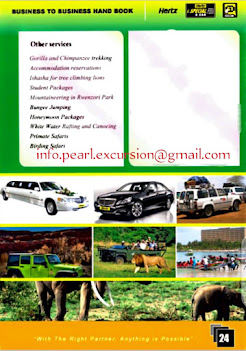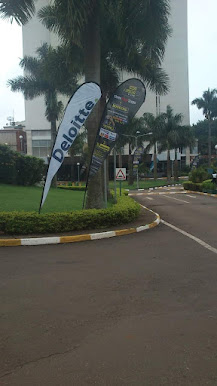iSPECIAL MOBILITY ECOSYSTEM
In-Country and/or Transient End User Ground Transportation Procedure
FOREWORD: "Incredible innovations within the transportation sector are being driven by the growing recognition that cars, once synonymous with freedom and ease of mobility, have become a victim of their own success. In cities around the world, congestion is undermining mobility, imposing huge costs not just on commuters or people out to run a simple errand but on society as whole."
"The problem that confronts transportation planners is that adding new infrastructure capacity to relieve congestion is notoriously slow and costly. Given the environmental issues to be explored, land to be acquired, permits obtained, people moved, and construction undertaken, it can take years , if not decades, to go from conception to delivery. Yet there are innovative new ways of making more efficient use of existing infrastructure already coming onto the scene."
"The arrival of the 'information everywhere' world has opened up new opportunities to make the existing transportation network far more efficient and user friendly. Coupled with new transportation capacity, the changes spurred by technological changes and the innovations it inspires will help preserve freedom of mobility in the 21st century. Services like real-time ride-sharing and car sharing for instance, are helping urbanites get around without owning a car – and are making the private vehicle a de-facto extension of the public transportation system."
"New apps are allowing commuters to compare the time, cost, convenience, carbon footprint and health benefits across all modes of public and private transport, broadening their range of choices and allowing for on-the -fly decision making that takes into account real-time conditions. For their part, automakers are focused on next generation "connected vehicles" that can access, consume, create and share information with other vehicles and surrounding infrastructure in real time – improving traffic flow and safety. And dynamic pricing mechanisms for roads, parking spaces and shared-use assets are helping balance supply and demand, much the same way the airline and hotel industry have been pricing seats and rooms for years."
"The result of these innovations – and of the ecosystem of creative players that have been drawn to transportation, from information technology companies to ride-sharing pioneers to app makers – is that the mobility field will look very different going forward. It will be:
- Massively networked. with ubiquitous connectivity throughout the system;
- Dynamically priced. so as to balance supply and demand;
- User centered. taking into account users' needs, priorities, data flows, and dynamic responses to conditions;
- Integrated. so that users can move easily from point A to point B, regardless of mode, service provider, or time of day;
- Reliant on new models of private-public collaboration. which take advantage of the increasingly diverse ecosystem of public, private, and nonprofit entities that are working to meet the mobility challenges of the 21st century.
Courtesy: Tiffany Dovey Fishman, carrealtime.com
HZiQZProject – Trailblazer Stakeholder Virtual Presentation
iSpecial – Go Motoring in Three Easy Steps
Smart Mobility Ecosystem
Ground Transportation Process Highlight
- Reservation
- Execution
- Documentation for Data Capture (Traditional) / Self-Service Portal (Modern)
- Reconciliation
- Billing
- Payment
Ground Transportation Document Exhibits
Reservation
This is attained by filling out a vehicle order form. This form is filled by the contract administrator and/or his/her designate or by calling our Ground Transportation Desk.
The order form is divided into two parts:
- Airport Transfer/Taxi
- Car Rental
Further, it spells out the following among others:
- The client Details and Flight information.
- The point for pre-positioning the vehicle
- Transaction Code
The contract administrator or their designate will endorse the form in the space provided as a mark of authorizing the transaction.
The beneficiary / client will endorse the form as a mark of being a recipient of the service.
The professional chauffeur/Driver will sign the order form as an acknowledgement of having been assigned the job.
Execution
This is attained by assigning a chauffeur to the service beneficiary who in turn takes instructions from him/her. The assignment of the driver is effected by our Coordinator stationed at either our Operations Base or Coordination facility at the client premises.
Documents for Data Capture
Vehicle Order Form:
This form is filled out by the Contract Administrator and/or his/her designate to reflect the time, type of vehicle, destination and kilometres covered in respect of a given transaction. The Supervisor signs to confirm authorization of the driver to handle that transaction. Driver signs in acceptance to carry out that transaction.
Journey Invoice :
Like any other Demand Note, the Invoice contains all the particulars of the transaction. The requisite particulars captured include among others: driver's names, vehicle type, client's names, chargeable kilometres, waiting charges and type of job/transaction - either local run and/or Airport transfers and/or Car Rental.
The client must sign against the amount charged for the distance covered before the Demand Note/Invoice is taken to the Contract Administrator for posting and filing. The original copy of the Invoice is held in the clients custody to facilitate periodic reconciliation.
Journey Cash Receipt:
This contains every particular that is found on the Invoice leaf. The only difference being the function. Whereas the Invoice is used to bill "a post paid" client, the receipt voucher is used to receive cash from "a Pay as You Go" client/s who exercise the cash payment option.
Vehicle Booking Voucher
This is generated by the client asking iSpecial to carry out a particular transaction on a particular date. This document shows the name of the client , flight details (date & time), it also shows whether its an airport drop or pick up.
This booking voucher is signed by the Contract Administrator and/or his designate. Booking vouchers are originated by the client using own stationery format. This voucher can be used in place of a vehicle Order Form.
Ground Transportation - Vehicle Revenue Return :
A single vehicle may carry out more than one transaction in a shift of twelve hours, a driver therefore is expected to keep track of all the transactions carried out at all times.
This return is used by the driver who is responsible for entering every transaction carried out at a time. This document contains the client code which is the serial number of the transaction carried out by the driver, guest's / client's name, Room No./Card No./NIN/Passport No. among others. Each transaction must have an order form, invoice in case of charge accounts, and receipts in case of cash transactions. All these documents have serial numbers which are entered on to this form (VRR) and the physical copies attached onto the return for follow up.
At the end of every shift , the entire information is collected from the Vehicle Revenue Return and posted into the iSpecial system.
Reconciliation :
At the end of the month, this data is compiled and submitted to the client aggregator for reconciliation. This action serves to ensure that the information we have in the iSpecial Mobility system tallies with what the Client Aggregator has in their system.
A reconciliation statement ( iSpecial Debit Note endorsed by the Client Aggregator) is returned to iSpecial Mobility office as an acknowledgement of the bill charged by iSpecial Mobility.
Billing
On receipt of an approved reconciliation statement / detailed transaction summary report, iSpecial Mobility will send a Demand Note/Tax Invoice to the Client Aggregator (Hotel, Company, Apartment Block, Condominium Management, Staff Quarters, Project Site, etc) for payment of the amount due.
Payment
The payment once processed shall be electronically transferred as per the payment details availed to the Client Aggregator by iSpecial Mobility.
TREASURE THE PEARL, RIDE SPECIAL MOBILITY – ACRISS BENCHMARK FLEET GUIDE
1) GROUP B (EDAR) , GROUP C (CCAR), GROUP D (IDAR), GROUP E (SFAR)
2) GROUP F (FDAR), GROUP H (PDAR), GROUP I (LDAR), GROUP J (SDAR)
3) GROUP K (FFBR), GROUP L (PFBR / PJAR), GROUP M (FVAR) , GROUP N (LFAR)
4) GROUP ZP2 , GROUP ZB3 ,GROUP ZB1




































